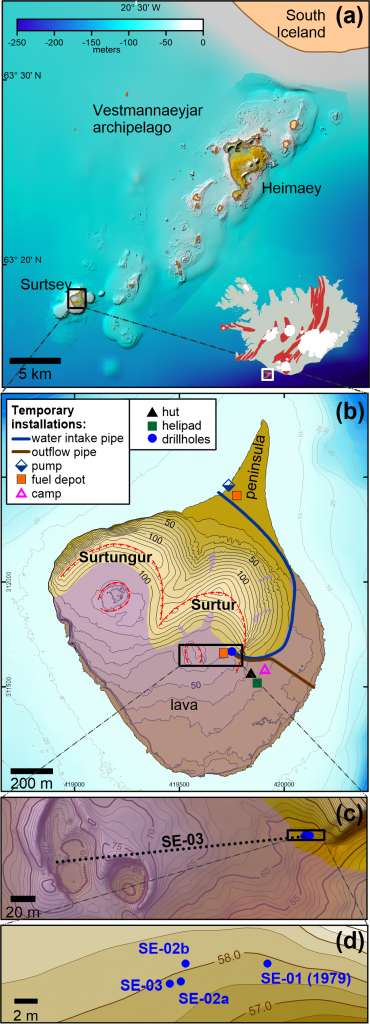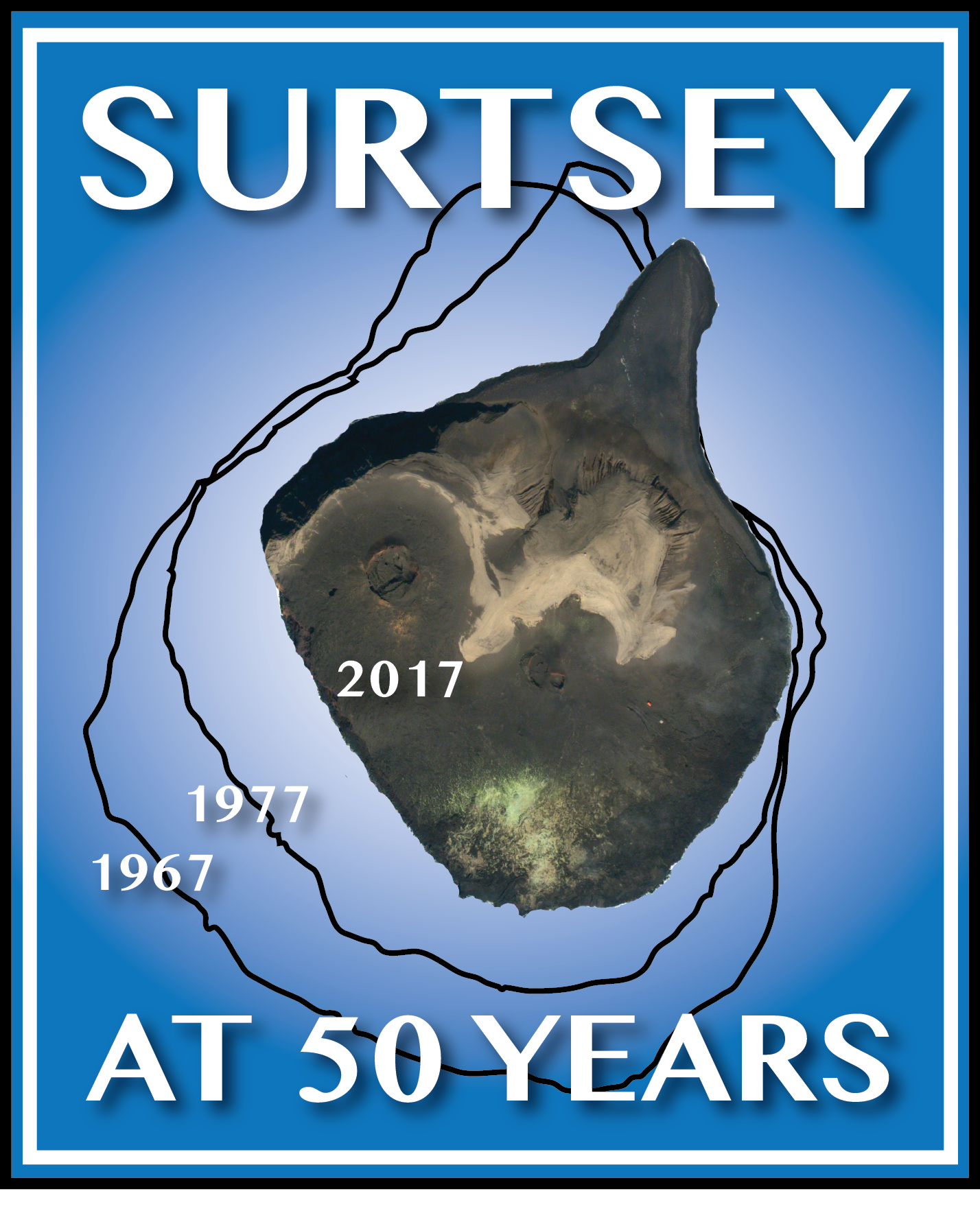All SUSTAIN team members are co-authors on this article. We describe the 2017 drilling project and the three new cored boreholes through the still-hot deposits of Surtsey volcano. The time-lapse drill cores in 1979 and 2017 record the changing geochemical, mineralogical, microbiological, and material properties of the basalt 50 years after eruptions terminated. They provide fresh insights into processes of explosive submarine volcanism and the earliest alteration of basaltic deposits proceed in a pristine oceanic environment.

These are all the members of the SUSTAIN team that contributed to this article and their professional affiliations.
Marie D. Jackson1, Magnús T. Gudmundsson2, Tobias B. Weisenberger3, J. Michael Rhodes4, Andri Stefánsson2, Barbara I. Kleine2, Peter C. Lippert1, Joshua M. Marquardt1, Hannah I. Reynolds2, Jochem Kück5, Viggó T. Marteinsson6,7, Pauline Vannier6, Wolfgang Bach8, Amel Barich3,9, Pauline Bergsten6,10, Julia G. Bryce11, Piergiulio Cappelletti12, Samantha Couper1, M. Florencia Fahnestock11, Carolyn F. Gorny2, Carla Grimaldi12, Marco Groh5, Ágúst Gudmundsson13, Ágúst T. Gunnlaugsson2, Cédric Hamlin14, Thórdís Högnadóttir2, Kristján Jónasson15, Sigurdur S. Jónsson3, Steffen L. Jørgensen14, Alexandra M. Klonowski7, Beau Marshall16, Erica Massey2, Jocelyn McPhie17, James G. Moore18, Einar S. Ólafsson2, Solveig L. Onstad14, Velveth Perez2,15, Simon Prause3, Snorri P. Snorrason19, Andreas Türke6, James D. L. White20, and Bernd Zimanowski21
1Department of Geology and Geophysics, University of Utah, Salt Lake City, Utah, USA
2Nordvulk, Institute of Earth Sciences, University of Iceland, Reykjavík, Iceland
3ÍSOR, Iceland GeoSurvey, Reykjavík, Iceland
4Department of Geosciences, University of Massachusetts, Amherst, Massachusetts, USA
5Helmholtz Centre Potsdam, GFZ German Research Centre for Geosciences, Potsdam, Germany
6Matís, Exploration & Utilization of Genetic Resources, Reykjavík, Iceland
7Faculty of Food Science and Nutrition, University of Iceland, Reykjavík, Iceland
8Department of Geosciences and MARUM, University of Bremen, Bremen, Germany
9Geothermal Research Cluster (GEORG), Reykjavik, Iceland
10Faculty of Life and Environmental Sciences, University of Iceland, Reykjavík, Iceland
11University of New Hampshire, Durham, New Hampshire, USA
12Dipartimento di Scienze della Terra, dell’Ambiente e delle Risorse (DiSTAR), University FEDERICO II, Naples, Italy
13Jarðtaeknistofan, (GEOICE Geological Services Ltd), Hafnarfjörður, Iceland
14K.G. Jebsen Centre for Deep Sea Research, Department of Earth Science, University of Bergen, Bergen, Norway
15Collections and Systematics Department, Icelandic Institute of Natural History, Gardabaer, Iceland
16DOSECC Exploration Services, Salt Lake City, Utah, USA
17School of Natural Sciences, University of Tasmania, Hobart, Australia
18U.S. Geological Survey, Menlo Park, California, USA
19Verkís Consulting Engineers, Reykjavík, Iceland
20Geology Department, University of Otago, Dunedin, New Zealand
21Institut für Geographie und Geologie, Universität Würzburg, Würzburg, Germany
